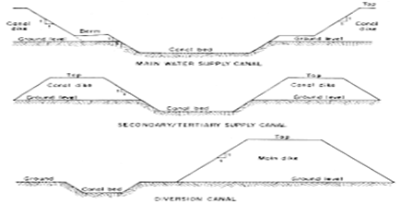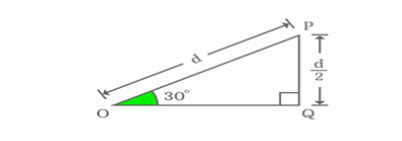

© Crafty Carp 2025



Between 1982 and 1995 I was stationed in Germany. Lippstadt was
my Artillery Regiments home. We fished every weekend and usually
on huge German / Dutch Rivers & Canals.
We set off regularly to visit some of our favourite waters.
The River Wesser Germany. Mittellandkanal Germany. Lateral Canal
at Roermond Holland. Keil Canal-Rendsburg Germany. Amsterdam-
Rhein Canal Holland. The Rhine River Germany. The River Maas-
Holland. To name just a few of our regular haunts.
Fishing the big European canals was mind bending to begin with,
they took some getting use to. We used to turn up with our refined
UK style tackle to the amazement of the locals. After a while and with
the help of some great German and Dutch friends we were forced to
scale up, the learning curve was steep but and we all learned quickly
It is a very different game, but it is not rocket science, after a couple of
years we were ‘Hauling’ with the best of them, all was well with the
world. The really big ones will test you and take you out of your
comfort zone every time which is a good thing. However, the only
way to learn how to fish them, is to go and fish them!
Taking on Big European Canals



The Fear Factor
The big European canals are relatively easy to get your heads around
once you know the rules, they are certainly not something to be
feared.
Yes, some of the bow waves created by the really big tankers on the
River Maas in Holland at times were huge, especially if the wind was
blowing against the direction of flow, when the lock gates open on
some stretches of canal, the water can run off like the Trent. The
waves ware big enough to take to off your feet if you were wading
around and had your back to the oncoming tanker.
Keith (Geordie) Burne an old Army mate got totally wiped out one
day, after setting up right on the water’s edge. We had been warned
by the locals, but he chose to ignore it. The memory of him shrieking
and flapping about in the margins like a fat duck, after a wave hit
him in the chest and took him and his tackle clean out, still makes me
laugh out loud today. 30 odd years later. It was hilarious.
Remember one thing, the carp are not bothered in the slightest about
the boat traffic, the size of the water, the noise of the engines, the
waves or anything else for that matter its home to them, its normal.

Hotpots & Channels
On the big canals there is always a centre channel, usually this is
identified by red buoys, white markers or concrete posts, identifying
where it drops off or shallows up. This is the hotspot; it doesn’t take
the brains of the Archbishop to work out that you should not be
casting to the middle of the shipping lane channel. The water
displaced by a few thousand tons of shipping tanker will shift your
leads every single time. No amount of lead will stop this.
Regardless of size, they are all roughly identical in their construction.
But if your new to the sport then you may not know, and that’s OK.
We live and learn.
Canal Construction
If you look at the image above, most canals are an extended flat-
bottomed u shape. So, if you did manage to get a lead to hold the far
shelf and it’s a light lead, your line is now in danger of being
captured by the vortex created by the boat’s props. If your line is
picked up by the spin and tow of one of the smaller white weekend
cruise boats, with high set propellers. They will strip your reels in
seconds. You may lose the lot. You should not be anywhere near the
middle of the Cut if there is serious boat traffic, you ain’t “Stret
Peggin” on these waters trust me. Only a total fucking fool casts to
the middle of the Dutch Cut or towards the far side knowing that
huge boats are on their way through. And yes it was live on TV. Sorry
but get a grip, this is no way to promote the sport. If you do not knot
know, then do not Blagg!!!



Unlocking the Code
So, how do we tackle the big European cut? Which at first glance may
seem very big, difficult if not laughingly impossible since almost
everything looks the same?
The straight and monotonous course of the canal often does not seem
to offer any clues. But even the smallest irregularities often help and
will give you the key to unlocking them.
If you are not fishing a true canal feature like a boat turning point,
which are more akin to a small lake in the canal and the easy cop out,
or constructions like new jetties, natural harbour basins, locks, warm
water dischargers from power plants. Feed loading points for boats
carrying grain. Then you are going to be sat on a traditional, ruler
straight, big, deep, bruiser of a European canal.
So where is the spot on these canals?
On a straight section of big European canal, with regular boat traffic
the feature is exactly where the flat bottom meets the 30-degree
sloping wall. The degree of the slopes varies, but the crease is the
spot.
The Crease
So, in this diagram you are sitting at – set up on point P. The middle
of the rising slope is D. The bottom of the slope is the tip of the green
part O. To the left of O would be the flat bottom of the canal until it
gets to the opposite side and we go back to the graph but in reverse.
O = The Crease!
Got it?
OK. Now take your lead rod / marker rod and cast it out. Feel for the
drop. Drag your lead back until you feel the resistance of the crease,
the start of the ledge, O in the diagram.
This is your line, O. This is the patrol area for all of the big carp on
most of the big navigation canals in Europe. The shape differs slightly
but they are all almost identical in most countries.
This is where all of the food items hold, if the area is being fished by
anglers their bait will collect in this area. As the boats pass through
all food items are lifted and moved but will always settle at this point.
Anything washed onto the shelf will find its way back down to this
point usually. The carp also feel safe here, no props spinning, they
can hold against the slope if they need to get out of the way.
A 5 oz flat lead is the only thing to clip onto your leader in our
humble opinion, give yourself a chance of holding or at least sliding
around, less.
The second thing is braid, you are going to get washed around and
some of the bedding slabs used in the construction of the canals are
sharp edged and often covered in mussels, your mono / flouro can &
will be cut easily. Get the Braid on your reels. 35 Lb will do the trick,
it’s all a little agricultural but it works out there.
Ensure that your rigs are solid and seriously well put together. A 20
Lb carp turns into 50 Lb carp in the tow. And Sods Law dictates that
every time you have one on, a fucking ocean-going Container Ship
pops into view, coming at you at full tilt. There is no room for a little
girly rig, its 25 Lb, braided hook length straight through and
connected to a size 4 Long Shank. Do not fuck about.
We mostly use/d 20 mm boilies as a minimum, flatten the bottoms or
chisel them into a square to slow them down. You want them rock
hard if you are going to use them, they are going to get bashed about
and the canals are full of Crays & Mitten Crabs, in fact I would go
with ‘Growlers’ on the hair every time.
A lot of the local boys will tell you not to tip particles in due to the
huge numbers of Bream. I beg to differ. Peanuts have been used
extensively in Europe for years, the German pleasure anglers can’t
get enough of them, the Bream are not to fussed about them, the
Dutch boys also stick them in. If I was going to stick particles into a
German or Dutch canal, it would be peanuts, hemp, corn in that
order. If I had to choose only one, it would be peanuts.





What’s your secret?
Now. I’m giving you something which many of you will not know,
unless you know. A small secret often overlooked.
After 10 pm in most of Europe the lock gates are usually locked until
the morning. Simply find the lock keeper on your given stretch or
grab a local dog walker and ask him / her the question. If you get the
answer you are looking for. “Ja, die Schleusen schließen um 22 Uhr”.
Then you are night fishing and it’s game on. (You are still going to get
traffic; the tankers will chug by and moor up in front of the huge lock
gates in readiness for the morning. But there are much fewer of
them).
Timing
It is so important to note when feeding your swim…..If the lock gates
are closed at 10 pm at night, do not fish it too hard in the day and do
not stick loads of boiled magic stuff into the Cut in the day. It’s a sin.
The whole lot will be washed around by the ships, its going to be
sucked around and distributed over a large area if you bang the
magic balls in.
Dutch Gefahr
Whenever we are in Germany or Holland we go to the Yellow Peril or
Dutch Danger. We knew it as The Yellow Peril way back in the mid
80’s. We were taught this very powerful little trick by some hard-core
Canal Match Anglers who swore by it, it still works a treat.
Yellow Peril is a Dutch Ground Bait consisting almost 50 / 50 Corn-
Maize and Sweet Biscuit Meal. When mixed and compressed its solid
and sinks like a brick. It’s a big Bream bait but carp cannot get
enough of it. Mix up a really heavy batch, we used to do it in a
plastic baby bath, load it with leam (Powdered Clay) and we used a
load of Hutchinson Scopex back then. There are other flavours
available. We like Scopex.
Ball them up into rock hard balls and stack them up in your bath. Let
then dry out and form a skin. Stick 20 of them on the crease from the
off.
That’s O in the diagram remember.
The ground bait is going to be turned into a sweet electrolyte soup by
the boats, and that’s a good thing. We want the smell to be sucked
along, we want our little stretch of canal to be stinking of Corn /
Sweet Biscuit & Scopex. Trust me the Carp and the Bream will come
along the crease from all directions for a sniff and a look around, but
when they get to you there will be no real food on offer to them. (You
are going to catch big Bream in Germany and Holland when fishing
canals, accept it).
Your Tiger-Nut hook bait wants to be the only real mouthful in your
swim.
Tip. By adopting this method, it ensures that you are not
spreading boiled baits for dozens of metres left and right of
you…..Bang tons of boiled baits into huge European Canals
when the tankers are moving in quantity, and you are not
helping yourself. Boilies lock in scent in most cases, they do
not break down easily in cold canal water, they are used for a
very different fishing situating in the whole. They are excellent
on still of sluggish waters.
Bang them in the big European canals, and the tankers will
kindly spread them for hundreds of meters for you. The fish
will gauge themselves on your 20-mil free offering when they
feel peckish, if they are nice and rock hard they will be rolling
about that stretch of the Cut for weeks.
However, you can introduce loads of Peril into your swim
without doing any damage at all to your swim.100 balls will
not make a single bit of difference. Keep topping that scent up
after every big boat passes. We used to aim directly for the
propellers of passing boats and lob a ball directly into the
blender.
Every now and then we got a proper bollocking from the
owners of the pleasure cruisers for bouncing babies head size
balls of ground bait off the side of their shiny white “Benny
Boats” boats when our timing was out. “Hay arschloch hast
du nichts mere zu tune”. Came the cry accompanied by a
middle finger.



In conclusion
There are some huge carp in the big European canals. We were
catching 30’s in the 1980’s. My mate Simon Nightingale one of the
original Anglo-German Carp Society members had 5 30Lb carp in an
afternoon from the Hamm Canal in Westphalia which got him into
the German Carp Society’s magazine at the time. I think this was
1986-ish.
Home-made, (Hutchinson) Pukka Salmon were the baits De-jour
back then and we made them by hand. It took ages.
Because the different sections of the canals are separated by locks,
each section is occupied by differing numbers of carp. Carp really do
not like swimming through locks. So, if you are struggling, give it a
bit of time and if it’s not happening move to a different part of the
canal system. You will have kilometres of it, almost to yourself.
Some of the long ones have roads which run along the canals in both
directions with small bridges which allow you to move from side to
side.
So, you see, a big European canal is not that frightening or
monotonous once you know how to play the game.
European canals are seriously addictive, miles of space, polite dog
walkers, not having to worry about your tackle disappearing. Great
food, stunning beer and some seriously pretty fat ladies to tempt you.
The carp are also stunning. Touché!
Germany back in the day
If you have never fished them, and you want to give it a shot. Give
me a bell, I will happily give you the location of a couple of stunning
areas, before you leave fella.
I’m away to Germany / Holland for 10 days as soon as the lockdown
has finished.
Tight lines.
TT.

Austrian & German Beer Hall Songs
Image © Toby Taylor
Image © Toby Taylor
®
® The Crafty Carp and associated logo are prtected by Trade Mark
